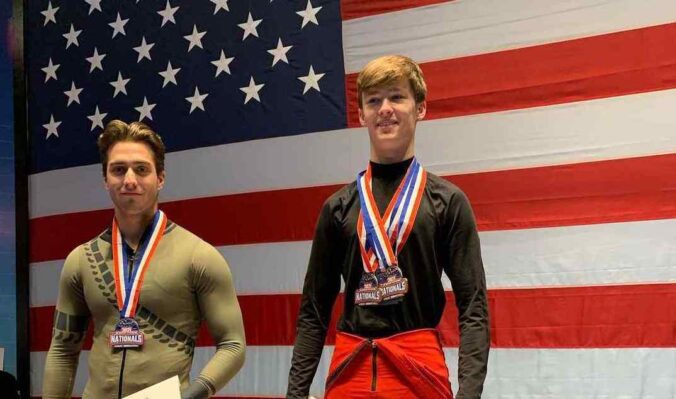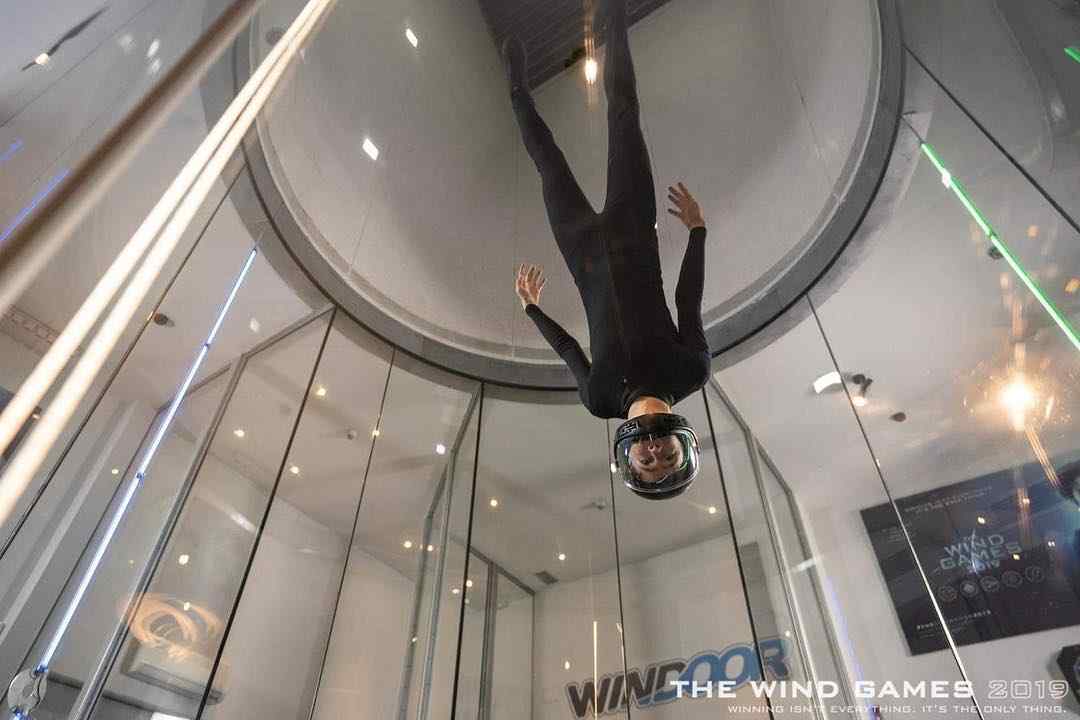Features
One of America’s Finest Flyers Prepares for his First World Cup
17-year-old James Rogers, of Lakeland, Florida, is one of America’s best indoor skydivers.

[the_ad_placement id=”article-above-content-mobile-only”]
Some wind tunnel enthusiasts come to the sport by chance.
Not so with James Rogers. Flying is in his blood.
The 17-year-old’s father was a paratrooper in the U.S. Army and an avid skydiver himself. Whenever the original American wind tunnels were created, the elder Rogers was among the first to fly in them. As a result, Rogers was flying in tunnels from the ripe old age of 12. The teen, who lives in Lakeland, Florida, had his first tunnel experiences at the now-defunct SkyVenture [iFLY] Orlando tunnel, but currently trains full-time at iFLY’s Tampa tunnel.
(In fact, Rogers was the first person to fly in the 14 ft (4.3 m) recirculating Tampa tunnel, which opened in November 2016.)
Even at the age of 12, Rogers was hooked. He began competing around a year after he started flying. “I liked competing quite a bit,” he told Indoor Skydiving Source, “and started going to USIS Nationals, the Wind Games, stuff like that.”
After a standout performance in US Nationals in El Paso last year, where his team won several events, including solo freestyle open, four-way dynamic open, and best trick, Rogers earned a ticket to represent the USA in Belgium at the 2022 FAI Indoor Skydiving World Cup this April. There, he’ll compete in both 4-way Dynamic and Solo Freestyle.
Though he has competed in international competitions before, the FAI Indoor Skydiving World Cup, the fourth in history, will be his first World Cup.
Training with the Cream of the Crop
Rogers is coached by some of the top skydivers, both indoor and outdoor, in the business. His primary coach is former professional skydiver and world champion Mike Wittenburg. The four-way team Rogers is a member of also includes Wittenburg’s two children, Noah and Kaleigh (the current Dynamic 2-way world champions). Wittenberg recruited Rogers to join his team after the former’s first Wind Games.
Rogers also works with Rafael “Rafa” Schwaiger, the current freestyle world champion, and former world champion Fabian Ramseyer, occasionally traveling to Poland to train with them. “It’s important to get top-of-the-line coaching, and you can’t get much better than these coaches,” he said.
On average, Rogers spends around four hours a week actually flying in the Tampa tunnel, “but I’m at the tunnel pretty much all day during those days,” he said.
Unlike most teenagers, Rogers, at least, doesn’t have school taking up his time. He graduated early from high school online, around six months ago. “[School] is luckily something I don’t have to worry about,” he said. “So I can focus more on flying.”
Moving forward, he plans to work towards a two-year associate’s degree online so that he can continue to go full-steam training in the tunnel.
Though he can’t yet go skydiving outside (he turns 18 in May 2022) he is interested in traditional flying, but he always believes he’ll do more tunnel flying. “I definitely want to get into [outdoor skydiving] to grow my knowledge in general. I want to get up to speed with the other top flyers when it comes to that.”
Rogers flies in a variety of disciplines from freestyle to two-way and four-way dynamic, and more, but he has no real preference. “I enjoy it all,” he said. “Everything is different.” It can be more fun flying with other people, however, he admitted, “because you have someone else to work through problems, go through different ideas, go back and forth and try to make your routine as good as possible.
In addition to tunnel flying, he enjoys weight training and running, but the main thing he does besides tunnel is practicing boxing and mixed martial arts (MMA). “It’s just a hobby, but it’s something I really enjoy. I feel like it helps my flying. There’s a lot of precision in both sports (boxing and flying) and the coordination you get from training each sport translates well.”
A Race to the Bottom
Post-pandemic, Rogers is optimistic about the future. “I think things are starting to go in a good way again,” he said. “Competitions are happening now, tunnels are opening again, things seem to be getting back to normal.”
When asked about the future of the sport, however, Rogers was still optimistic overall, but he noted that the United States lags behind, at least currently, in terms of accessibility. Hopping into a tunnel for a two-minute flight isn’t expensive, but if you want to train for hours, the cost ramps up fast. “It’s a little harder to start flying in the US,” he said. “If you look at countries like Poland and Russia, tunnels there are charging like $200 an hour. Here it’s $600 or $700 per hour, some charge even more. It’s much easier to get sponsorships over there, too.” South of the border, Mexico’s only commercial wind tunnel is fairly cheap, as well, with two-minute flights costing around $17.
The influx of new competition tunnels coming in to outdo iFLY, however, means change may be on the horizon, Rogers believes. “When those new tunnels start opening, it’s going to be a race to the bottom, and prices will get lower and lower with the competition,” he said. As of now, he recommends new flyers begin by attending one of iFLY’s Flight Schools, designed to teach kids ages 4-16 how to fly. “Right now, that’s the best way to go as far as affordability,” he said.
For developing flyers who want to start taking the sport seriously and can afford to, “Finding good training is everything,” Rogers said. “Finding coaches like Mike, Rafa, Ramsey, people who have been doing it longer than anyone else, that’s critical.”
He added that many intermediate flyers often don’t realize that eventually, they’ll need to expand beyond the resources their local tunnel has to offer.
“I feel like a lot of people get to this barrier where they stay coaching with the tunnel instructors,” he said. “There’s nothing wrong with [those instructors], but they can only get you to a certain point. If you want to continue to grow and improve, you have to find people that will help you who are at the point you want to be at or further. You have to go out looking for the right coach.”
Constantly reviewing video footage of his flights is another technique that Rogers finds helpful in his training, and that he recommends to other flyers. “I video pretty much every second that I’m flying, and I have been for three years now. That’s a big part of my improvement, being able to see what I’m doing in the tunnel and fix what I don’t like right on the spot.”
“I can step out of the tunnel, watch my video, and hop back in and fix any issues immediately.”

Looking Ahead
For now, Rogers believes he’ll remain in Florida, but at some point in the future, he plans to move to Poland to train at the legendary Flyspot tunnel in Warsaw, at least for a year.
The reinforced concrete tunnel is a megalith, offering wind speeds over 185 miles per hour, making it among the fastest in the world. The tunnel has a restaurant, rooms above the tunnel where flyers can stay, and a top-of-the-line video system, among other features. “That’s where the top flyers are at, and where they train every day,” Rogers said. “Being among them, training among them, would be a big benefit.”
Rogers plans to take bodyflight as far as it goes. Looking forward, he’s setting his goals high. “I’d like to win everything I’m competing in right now consistently,” he said. “Nationals, Worlds, every competition that there is.”
He also hopes to begin coaching quite soon. “I want to share my knowledge with others,” he said. “If there aren’t coaches at a high level that are competing and have the knowledge about competitions, there isn’t anyone to help new flyers come in and grow the sport. I think coaching, giving back, is extremely important.”
Published: February 25, 2022 | Last Updated: February 25, 2022
Don’t miss an update!
Join our mailing list for the latest indoor skydiving updates delivered directly to your inbox.
"*" indicates required fields

